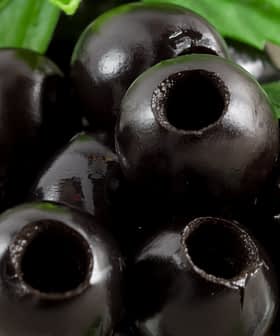Is a Perfect Storm Brewing for California's Olive Oil Industry?
Headwinds for Europe's olive oil market appear to bode well for California's growing industry.
In recent years, California’s olive oil industry has been growing and gaining recognition. Headwinds in Europe, which range from bad harvests to food scandals could provide additional traction for producers in the state.
US consumers’ have long equated olive oil from Europe with higher quality for lower prices. But California producers say the tides are changing. “California is being recognized for providing great extra virgin olive oil in a range of prices and flavor profiles,” said Patricia Darragh, executive director of the California Olive Oil Council.
Meanwhile, Europe is experiencing a barrage of problems with its supply and attacks on its credibility, and this year, the region is also at risk of losing ground on competitive pricing.
Global olive production is expected to decline 8 percent this year, and it’s largely due to weather-induced problems in Europe. Italian farmers expect their yields to be cut in half. Greek farmers are bracing to lose over a quarter of their crops, and floods in Spain wreacked havoc on the country’s most fertile olive-growing regions.
As supplies tighten, prices for European olive oil are rising. Since October, extra virgin olive oil in Spain, Greece, and Italy has jumped 10 percent, 17 percent, and 30 percent, respectively. In Britain, prices are at the highest levels in at least seven years, the Washington Post reported.
US consumers are wielding a strong dollar, which has shielded them from major price hikes thus far. But European olive oil is expected to keep getting more expensive, which means the US market is likely to see at least a modest price increase. Ultimately, the impact on consumers’ wallets will be determined by factors including currency values and how much of the cost increase retailers choose to swallow, said USA Today.
As US consumers face the prospects of scarcer, more expensive European olive oil, they’re also increasingly confronted with reports of shady practices associated with those products. Reports and data suggest mislabeling is still a problem. Products marketed as being produced in one country are often made with oils from other ones.
In January, for example, Italian forces arrested 33 mafia suspects linked to a criminal enterprise that allegedly imported and sold fake extra virgin olive in major US cities.
“Many consumers are concerned about traceability and that is often a common buying consideration,” said Darragh. As those concerns have grown, California has seen a dramatic increase in demand for its olive oils.
Currently, the state’s producers supply about 6 percent of the extra virgin olive oil sold in the US. That’s up from less than 1 percent ten years ago. Darragh said she believes that growth is based on the public’s demand for authenticity.
Lower prices for European products doesn’t have the same sway as in the past and consumers and retailers are willing to pay a premium for local extra virgin grade olive oils from California, Darragh said.
With consumers’ growing appetite for healthy ingredients and their growing affinity to support locally-produced products, California’s olive oil industry is projected to see revenues, profit and demand continue moving on an upward trajectory. That explains why the largest American producer, California Olive Ranch, recently increased its farmland holdings with a $9.2 million acquisition in Yolo County.
Throughout the state, market players are positioning to capitalize on their growing success. Mills are being built and expanded and producers are expected to plant about 3,500 acres every year through 2020, according to the COOC.
Nevertheless, with the United States demanding more than 300,000 tons every year, and as consumers learn to appreciate the unique taste characteristics of different varieties of extra virgin olive oils from different regions, California’s current tailwind is unlikely to cause too much worrying among its established international competitors, at least for the moment.








